First there was Yamamura’s suitcase, now there is Yamamoto’s trunk. With its bottle green leather exterior, fine strap work, brass fittings and nailhead detail, it is a handsome example of that species better known as a steamer trunk.
 My estimate on date as I bought it was 1920s or 1930s based on its style and materials. Thanks to reader Mary Doveton, who had helped me decipher the hotel labels on Yamamura’s suitcase, we seem to be confirming that date. A quick search of the names on the label – Tajimaya 但馬屋 (Tajima which is the family name and ya which means shop) and Hiroshima 広島 – yields a shop of that name specialising in luggage and bags that has been around since 1919. Keijo was the name for Seoul when it was under Japanese occupation from 1910-1945, so it seems as if they had a branch there as well and that further confirms the time period. I have actually written to Tajimaya and attached photos of the trunk, so we will see if we get a reply!
My estimate on date as I bought it was 1920s or 1930s based on its style and materials. Thanks to reader Mary Doveton, who had helped me decipher the hotel labels on Yamamura’s suitcase, we seem to be confirming that date. A quick search of the names on the label – Tajimaya 但馬屋 (Tajima which is the family name and ya which means shop) and Hiroshima 広島 – yields a shop of that name specialising in luggage and bags that has been around since 1919. Keijo was the name for Seoul when it was under Japanese occupation from 1910-1945, so it seems as if they had a branch there as well and that further confirms the time period. I have actually written to Tajimaya and attached photos of the trunk, so we will see if we get a reply!
The roots of modern trunks lie in the ancient forms of Asian travel boxes which had iron handles on either end in which to thread a carrying pole, in contrast to Europe and America, where chests were made for storage and kept in the house, such as a trousseau or hope chest a bride would take with her to marriage. It was only later, in the romantic age of travel and with the success of a young Frenchman named Louis Vuitton (and all his copycats even then) in the second half of the 19th century that trunks took on such a Western form and association.
While I have only recently discovered Yamamoto’s trunk at the Kawagoe shrine sale, I had already saved some screen shots of the huge curated sale of vintage and antique steamer trunks on One Kings Lane in November. The pictures are fascinating in their variety of shape, color, material and price.
Obviously few people travel with trunks anymore these days, but they have taken on a popular new life as coffee tables. Their boxy shape fits with different decor, the simple flat top is easy to style and perhaps, best of all, they offer spare storage space.
Scott Currie creates a gorgeously elegant room with a fantastic nailhead edged ship captains chest. Make sure to look at that coral aquarium atop the Dorothy Draper style chest (it is a beach house after all) and the bottle lamp in the corner.
In contrast to the vibrantly colored beach house above is Victoria Hagan‘s study in white, again punctuated by a fantastic trunk rimmed in nailheads.
And another similar one in this wood-paneled library, also by Victoria Hagan.
The combination of trunk, clock, industrial lamp, along with the needlepoint pillow (more on those soon) and Union Jack on the velvet Chesterfield strikes a perfect eclectic mix. I love how casual but interesting this room is.
On the other hand, a vintage trunk can soften even the most formal of rooms.
If you know me and my obsessions, I am sure you’ll realize that I am as captivated by those glass bottles atop the secretary as the creamy trunk.
She also uses another trunk, this time in rich aged leather, to anchor the den in the same house.
For the most part I have avoided the whole luxury trunk market (i.e. Louis Vuitton) in this post as there are lots of images out there on other blogs and websites, but I couldn’t resist this one doing double duty as storage in the small NYC studio apartment of Nausheen Shah as this 1890s LV trunk has labels from Japan and Singapore. If you do want to see more images with Louis Vuitton trunks, take a look at my Vintage Luggage board on Pinterest.
In terms of trends, you can’t imagine how many of the images featuring trunks are laid across zebra or other animal hide rugs like the ones above. I think the trunks bring up romantic images of 19th century travel to far-flung exotic places, so I get the combination, but I actually prefer the perfect global mix below. That canopy is amazing!
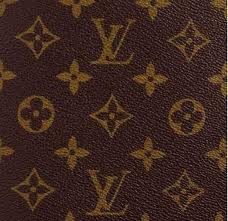 Coincidentally, in terms of Japanese influence on the world, did you know that the Louis Vuitton monogram was a Victorian invention derived from the Japanese motifs so popular in Europe at that time? Think about it – kamon anyone?
Coincidentally, in terms of Japanese influence on the world, did you know that the Louis Vuitton monogram was a Victorian invention derived from the Japanese motifs so popular in Europe at that time? Think about it – kamon anyone?
I hope you enjoyed this week of shrine sale stories, featuring something high-end (the French bar cart), something low-brow (the laundry hangers) and now something in between!
Related Posts:
If Only This Suitcase Could Talk
Research From a Reader…More On Yamamura-San’s Suitcase
Yamamura Really Got Around…More Details on His Suitcase Travels
Image credits; 1-2. me, 3-5. screenshots via One Kings Lane, 6. via The Meadows Antiques and Interiors, 7. Elle Decor July 2009, photo credit: Roger Davies, 8. House Beautiful June 1999, photo credit: William Waldron, 9. via Victoria Hagan, 10. via style-edition.com, 11. House Beautiful June 2002, photo credit: Carlos Emilio, 12. Country Living October 2010, 13-14. via HGTV, 15. via A Shah’s Life, 16. House Beautiful October 1993, photo credit: Richard Felber, 17. via louisvuittonaddicted.com.








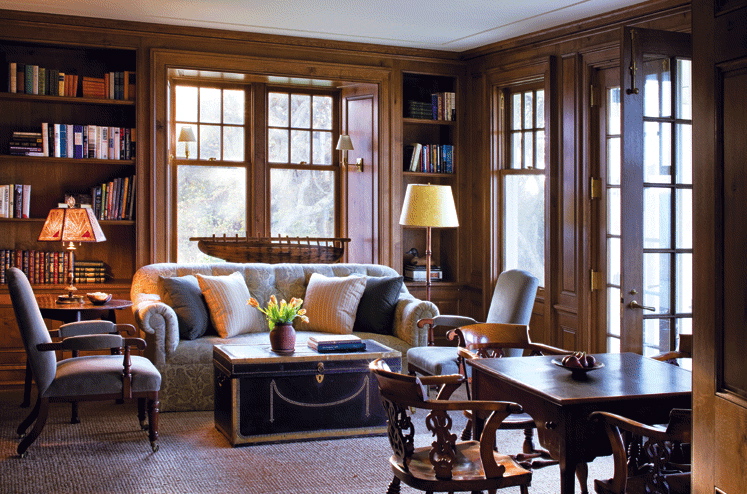
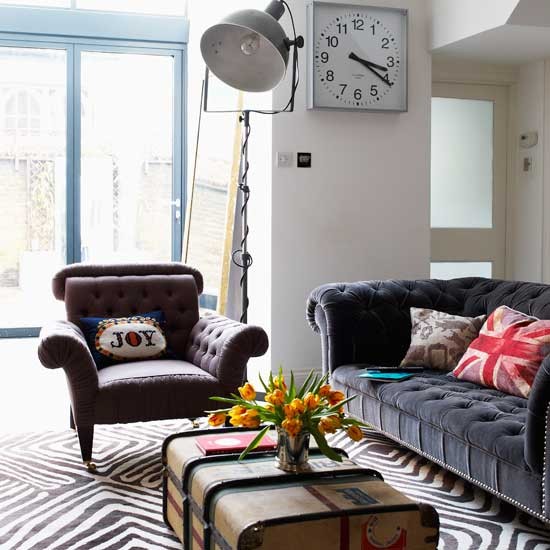
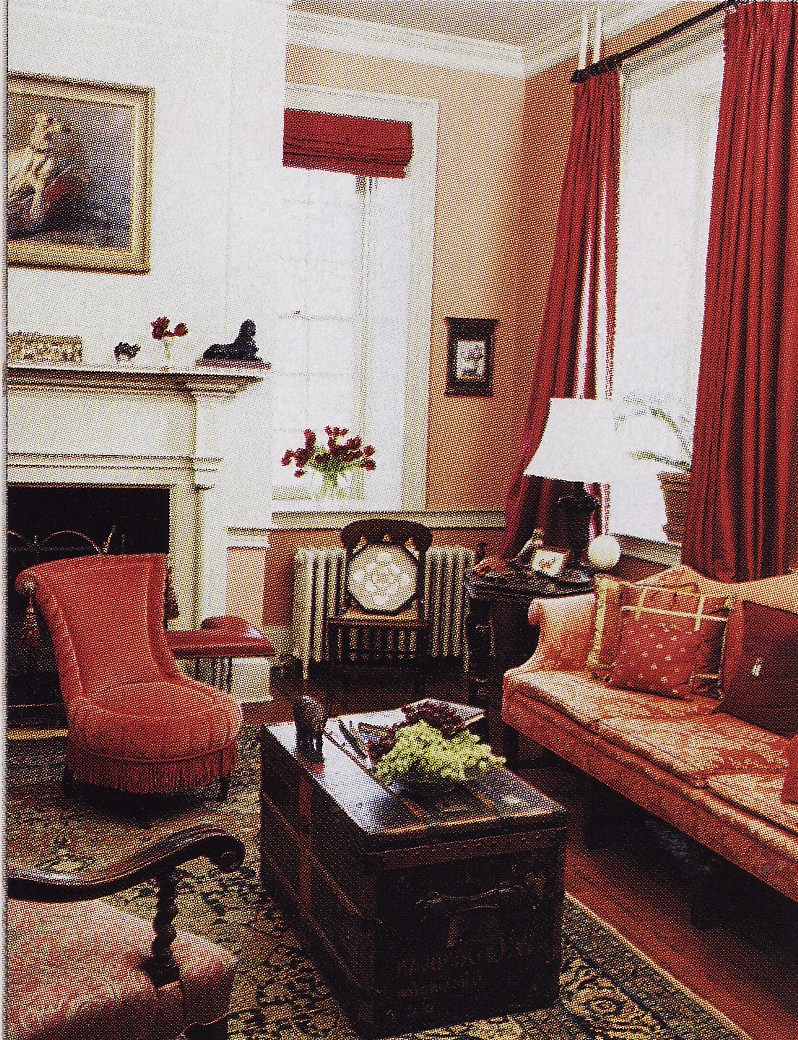



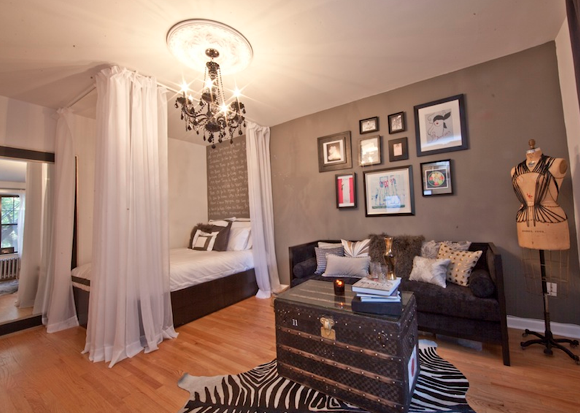

Now I’m wondering what my mom and did with my old trunk from the camp years!
The question is, what did it look like? And perhaps, how does it smell?
________________________________
Whew, I have no idea on the smell now. But it was a standard-issue black with silver accoutrements. Everyone at camp had one in the eighties!!
Totally into the square cream trunk with the contrast braces/ brackets- what should one call them?
I’ve been calling it strapwork…
________________________________
I’m so glad you wrote to them, if you hadn’t I would have:)! And now I have tons of inspiration for my own trunk project. I’m loving the casual vibe of that room with the cream colored trunk and fiddle leaf fig but oh, that last bedroom…so good.
P.S. Hope you got a better price than those One Kings Lane prices!
That last bedroom is from an ancient magazine issue – I have always adored it!
________________________________
this was a fun post and reminded me of my first apartment with Alan when we had a brass trunk for a coffee table which also held all our sheets and towels since we had no linen closet!
Exactly! That is one of the best things about them!!!
________________________________
I cannot believe the suitcase and now the trunk! What wonderful history and great pieces. I borrowed my dad’s old trunk to travel with (I really did!) when I went to Nantucket from San Francisco the summer of 1987 to work at the Nantucket Yacht Club. I stuffed all my summer necessities in the trunk and once it arrived, I used it as my “dresser” in the small bedroom I shared with another employee. Dad still has the trunk in his garage…I will have to take a second look at it and get the history of it this summer!
Shrine Sale Stories…Recent Treasures | Tokyo Jinja
[…] Posts: Shrine Sale Stories…Yamamoto’s Steamer Trunk Shrine Sale Stories…My French Moderne Bar Cart Shrine Sale Stories…Vintage Matchboxes, Frank […]
Eastern Influenced -
[…] Tokyo Jinja […]
Casual Charm -
[…] Tokyo Jinja […]
A Bit of Cosmic Luck…Shrine Sale Synchronicity | Tokyo Jinja
[…] and extra bedding. The contemporary bed in indigo plays off the other vintage pieces from the trunk to the herbiers. All things close to my heart as you well […]